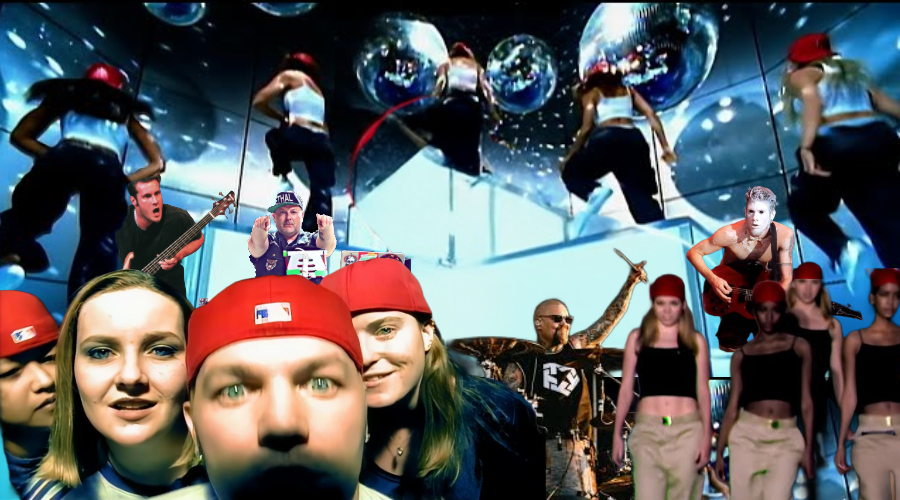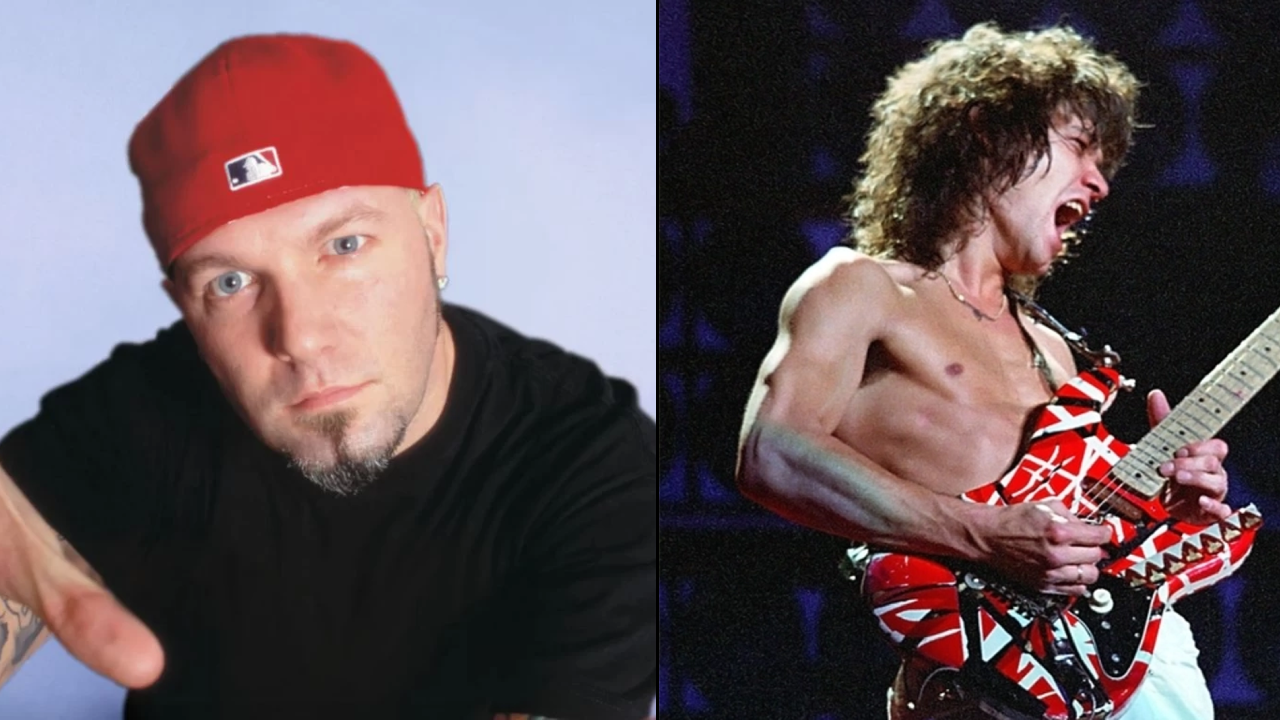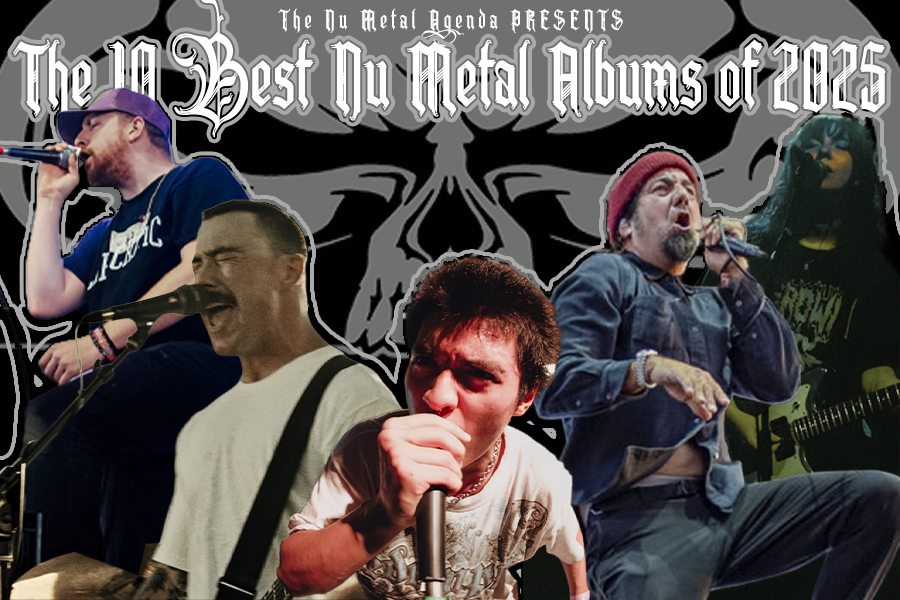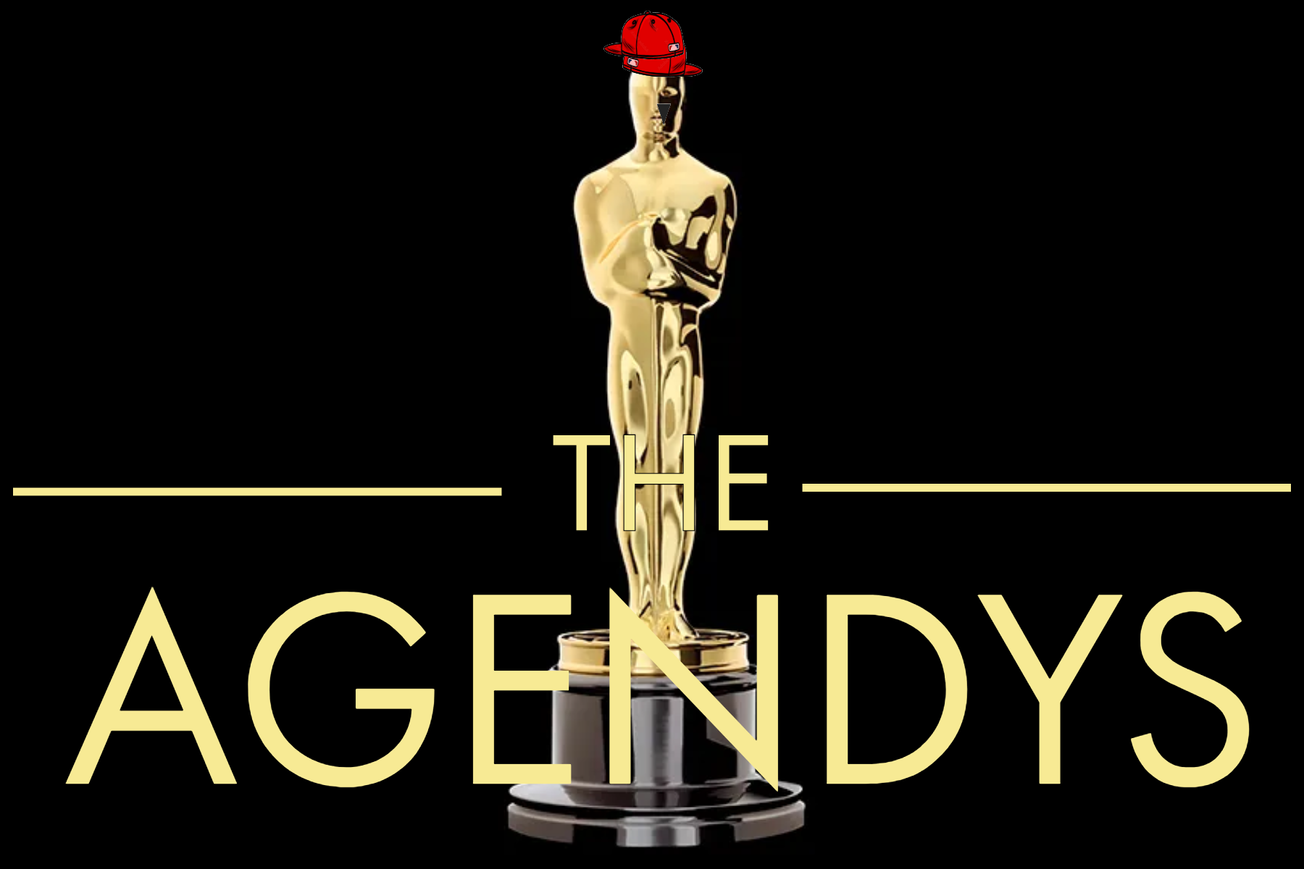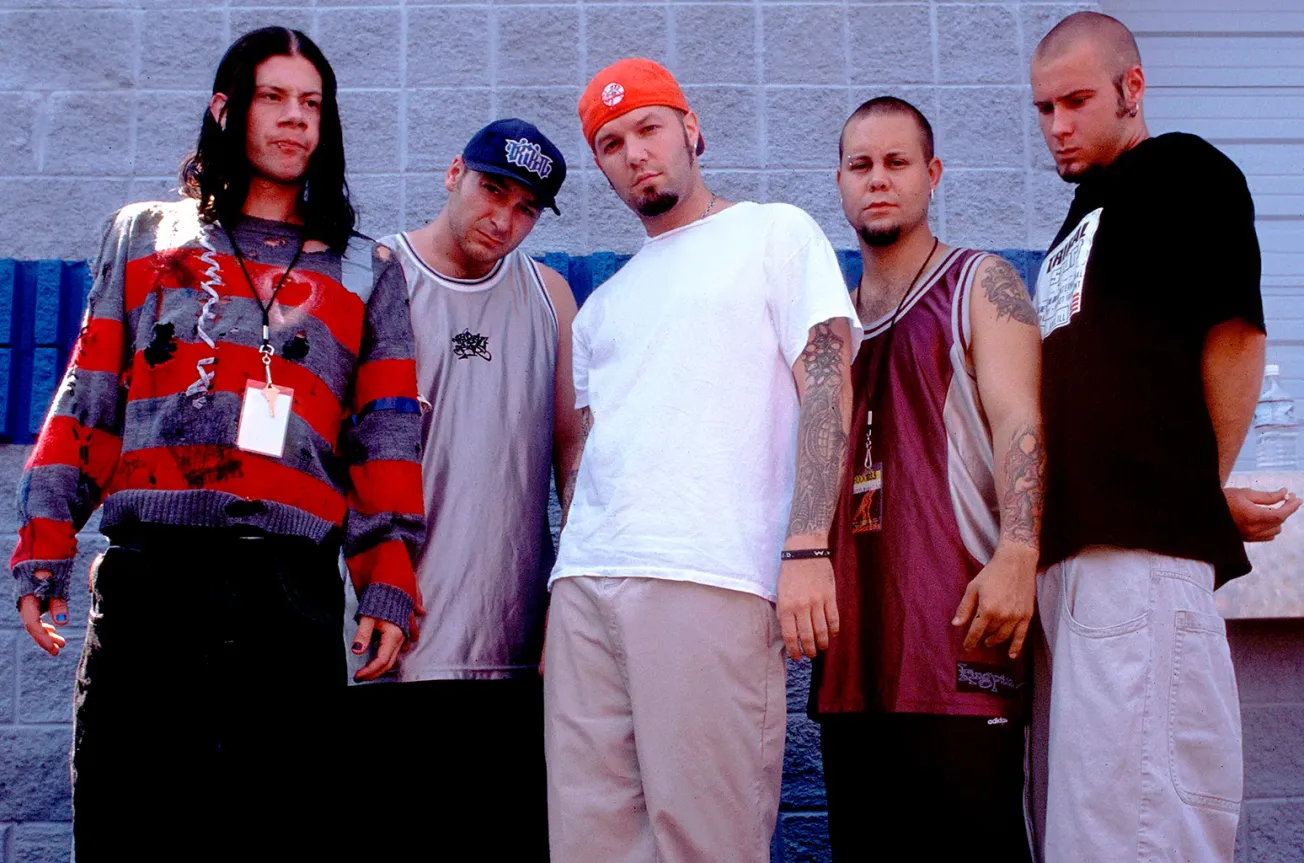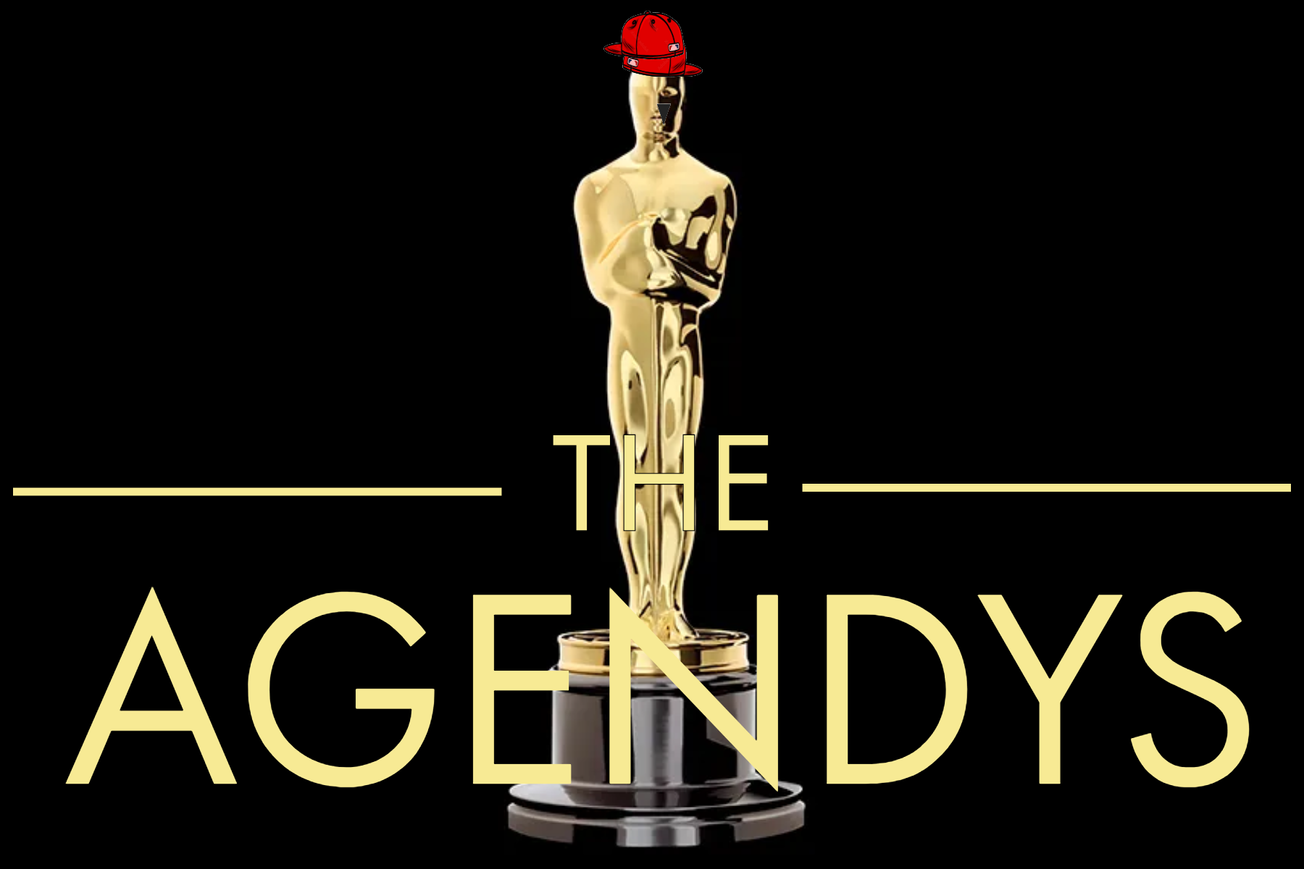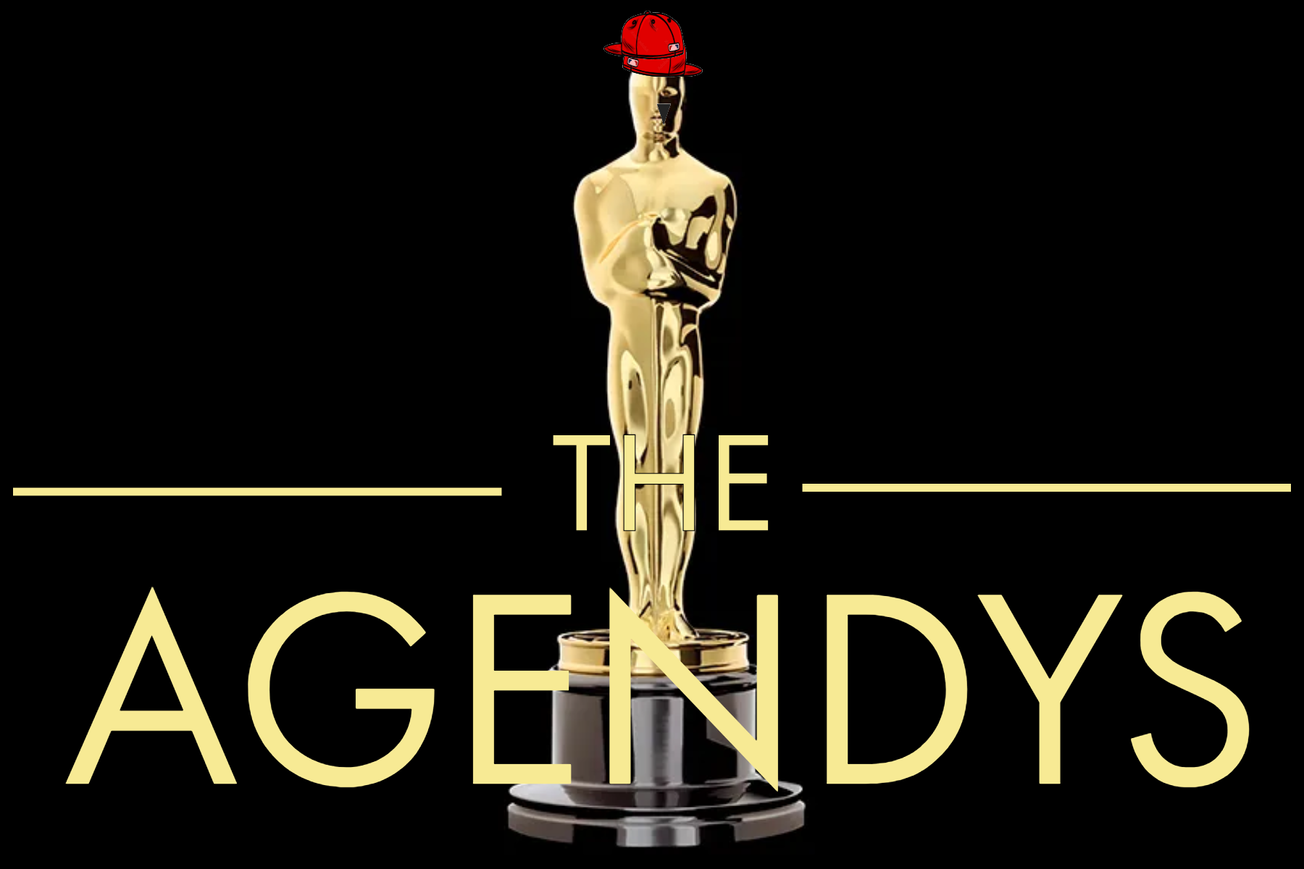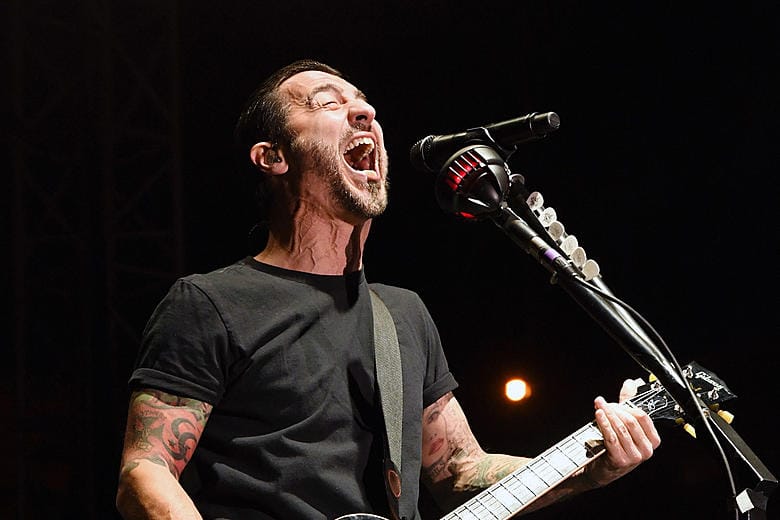In spite of all the tension in the world today, we got new Limp Bizkit on September 12th, with the Battlefield 6 tie-in track "Making Love to Morgan Wallen." Ideally, this means that the gap between new LB records won't be more than a few years, as there was a decade between 2011's Gold Cobra and 2021's Still Sucks. As such, we found it appropriate to figure out what is the best tune from the Jacksonville boys, going all the way back to 1997's Three Dollar Bill, Y'all$ and taking every single track in their catalog into account.
For this ballot, we adopted the format used by our friends at WrestleTalk for their year-end awards. Each writer submits their ordered top five, with the top pick receiving five points, the second pick getting four, and so on. Everything is added up from there, with top votes breaking ties when applicable. As the band has twenty-six singles, to say nothing of B-sides and non-album songs such as "Crack Addict," ranking all of them would be a Herculean effort. One day, though, we may have to go top to bottom.
While they did not make the top ten, there are several songs that received votes, and will therefore be our honorable mentions. These include, in no particular order: "Boiler," "No Sex," "Bring It Back," "My Way," "Livin' It Up," "Full Nelson," "Dad Vibes," "The Propaganda," "Leech," "Shotgun," and "Walking Away."
10) "Back Porch"
Gold Cobra (2011) redefined Limp Bizkit for the new era of nu metal. Six years after the band’s last release (2005’s The Unquestionable Truth Pt. 1) and eight after their last full-length album (2003’s Results May Vary), the Bizkit recontextualized themselves for a decade that had largely left rock and roll behind, blasting space-age Wes Borland riffs and new school rap stylings from Freddy D the whole way. Hidden away at the end of that record, however, is a little gem of a deluxe-exclusive track many may have missed. “Back Porch” is the afterparty to end all afterparties; after Durst is done frying sucker MCs and finding his inner serial killer on the rage-storm of the main album, it’s time to take listeners through the back door and drink ‘til there ain’t no more.
A full, bassy rhythm underscores one of the most delirious guitar riffs Borland has ever concocted; you can practically feel yourself stumbling to the limo as Fred triumphantly reminds us who he is - “Dickies, ball cap, you know what’s up.” It’s a psychedelic party-rap ballad that powers through its own cliches to keep you feeling up for one more glorious moment before the cobra swallows the sun. How this track failed to make the album proper is a mystery to stump the world’s greatest minds.
“Back Porch” never got much in the way of love from the charts nor the fans, but I believe it was a peek at what Bizkit’s future work would hold, including the new single “Making Love to Morgan Wallen” which opens on some similarly bubbly, menacing instrumentation. If you haven’t visited, do yourself a favor and check out this piece of Limp history. You may just find a spot that’s hot to get down.
-Charlotte King
9) Gold Cobra
When Wes, rich already and embarrassed by being in what had become the most hated band in the world, bounced in the wake of Chocolate Starfish, we saw exactly what the house looked like with mom moved out. Results May Vary is maybe the worst album the genre ever gave us, with Fred in particular giving the performance equivalent of inside-out pockets and a flop-sweaty shrug.
Fast forward to 2011. Heavy music is essentially in pop culture jail, which means nu metal, of all genres, is on death row. Absolutely no one in the world gives a shit about Limp Bizkit, assuming they’re aware the band still exists. Wes is back in the band, though, and all the locusts and wild honey Fred was eating in those desert years seems to have activated something not just long-dormant, but entirely new. Given the situation on the ground, the fact that they put out a record at all is pretty impressive, if baffling. The fact that Gold Cobra is quietly maybe the best record in their catalogue is nothing less than an argument I’ll be making for the rest of my life.
“Gold Cobra” is the sound of a band liberated from everything; adoration, expectation, interest—even its own existence as a band. Somehow, with everything stripped away, what emerged was leaner, more agile, more playful and more dangerous than anything they’d done since Significant Other. Borland’s opening riff surrounds like a fire alarm on the top floor of every building in town, while John Otto’s beat leans forward like he believes the music again. But it’s when Fred comes in that we hear the biggest change in this band; Fred can flow now. There’s a loose, supple swing to the way Fred rides the beat here, an honest-to-goodness confidence of a kind we’d never seen from him before. Where once he just bragged and complained and stage-managed, on “Gold Cobra” he seems to realize for the first time that he can just hang out and rap. It’s like watching kid realize he can jump high enough to grab the rim, and now he doesn’t have to run his mouth quite the same way as before. The production, for its part, doesn’t seem to know anything’s changed since Fred was conducting the masses at Woodstock like Poseidon before the sea—everything is thick and rich and dimensional, the drums punching through like polished wood, the overdubbed vocal tracks swinging in and out of the frame like all Fred’s past selves showing up to party and be healed. Gold Cobra, even as it took another 10 years to follow up, was the first day of the rest of Limp Bizkit’s life, and on “Gold Cobra”, the sun was shining and the road stretched way out ahead.
-Josh Rioux
8) Re-Arranged
Taking the 8th spot on our list is “Re-Arranged” from Significant Other, which I am so happy actually ended up making it to the top 10, period. Limp Bizkit’s got a lot of contenders for “best song” but for me, this one honestly takes the cake, as it feels like a great example of the balance between both Limp Bizkit’s soft and harder edges.
Steering away from Fred Durst’s usual “all up in your face” vibe and energy, both his vocals and the instrumentation are on the chill side, up until the song’s fairly emotional climax. As charismatic as he is when he’s trying to hype up a crowd, the passive-aggressive, almost nonchalant tone and lyrics on this track really just make it for me. Wes Borland’s guitar work speaks for itself even in its less technical applications. The scratching from DJ Lethal is pretty sparse, but I think that works exceptionally well here, as any further fiddling would’ve really taken away from everybody else. But speaking of shine… that bassline. That’s probably my favorite part of the song, the bass gets a nice amount of room to really breathe and coast you along with it. It’s just downright groovy. The height of the track shows that pent up anger Fred was fanning in the verses; it’s nothing super crazy, but sure to get a crowd moving regardless.
What also makes me love this song is the music video. The band’s in prison, having been tried for their crimes at Woodstock ‘99, and will be sentenced to death by… milk. A jury of suits watch our Bizkit boys perform for the last time as they slowly drown in the cramped chamber. Though the visuals hold true to the song’s morose atmosphere, it at least ends on a silly note with the band ending up in the same realm Squidward found himself in from that one Spongebob episode.
Though it feels like a major vibe switch from Significant Other’s predecessor single, “Nookie”, “Re-Arranged” stands tall all on its own (and clearly so, as it’s the only song Limp Bizkit had that ever topped the Billboard Modern Rock Tracks chart), showing you don’t really need to sacrifice much to still hit hard.
-Cain Borgia
7) Counterfeit
"Counterfeit" fucks, and it fucks HARD. I think what makes it so special is the theming. Similarly to the iconic "Break Stuff," "Counterfeit" banks on it’s relatability. However, rather than the track being a rager against the world, Counterfeit refers to a more singular distrust or betrayal. The idea of “that motherfucker is fake as hell”, or as the title says, a counterfeit. Everyone’s got someone like that in their life. A coworker, maybe an ex, or maybe even a friend’s friend that just doesn’t take a hint. Somebody, somewhere doesn’t trust somebody else, guaranteed.
I remember where I was when I first heard that bouncy riff fade in. It was one of many late drives with my best friend Westley (whose introduction and indoctrination into the world of heavy music might just be my greatest achievement) and the track really stuck with me after the fact. Whether it be the subject matter, or the fact that it was off of Limp Bizkit’s debut, but it seemed to pack way more of a punch than the rest of their catalogue (at least the catalogue I’m familiar with). This is Bizkit in it’s most pure state: unchained, unrefined, and unfiltered. Sam Rivers sports a groovy bassline during the verses, Wes Borland delivers riffs that would soon become a signature for the band, with lyrics from Fred Durst that are sharp, snappy, and full of wit, rocking that iconic flow and vocal timbre that he would become known for, and he unleashes some absolutely killer screams at the climax of the track, and it all crescendos in a bridge that knocks your socks off. "Counterfeit" showcases where Limp Bizkit started, sure, but it also showcases where they could, and did, go.
-Sam Owens
6) Take A Look Around
Arriving just two months after "Break Stuff," and in the wake of Metallica's lead single "I Disappear," "Take A Look Around" was a something of a surprise. More in keeping with Mission: Impossible II's vibe–an instrumental version was all over the film's marketing–and with a sense of "Actually giving a shit," it was the better song. The track avoids the usual soundtrack pitfalls–feeling like (or just being) a B-side; strained lyrical references to the movie; shoehorned musical motifs--and came up with something that celebrates its inspiration while at the same time sounding like something they could have written if the franchise never existed. Even the film's composer, Hans Zimmer, gave the band props:
"When I listened to Limp Bizkit’s song, it was the first time I heard anybody really make sense of the ‘Mission Impossible’ theme. And I know that isn’t easy, because a lot of people had a go at trying to make it work.”
Built off of a clever 4/4 interpolation of Lalo Schifrin's iconic 5/8 Mission Impossible theme, the track allows the band to a showcase their considerable skills with a straight face. Free of sophomoric lyrics and with the band's weird humor siloed off into the music video, "Take A Look Around" is proof that, deep down, Limp Bizkit is a great band. When the main theme drops down into the chorus riff, the band just lets loose with a power few of their contemporaries can match. To this day it's still one of Fred's most ferocious vocal performances. When the song finally shifts into Schifrin's original 5/8 meter, it's somehow more satisfying than if that had just been the whole song.
"Take A Look Around" is Limp Bizkit turning down the obnoxiousness without losing any of their edge. Instead of another cheeky novelty, the band delivered one of their most straightforwardly rocking tunes. A pure distillation of everything that makes the band great, it's a towering work of 2000s hard rock.
-Drew Davis
5) Pollution
Coming off of their debut album Three Dollar Bill, Y'all$, the opening song "Intro" portrays a religious sermon being delivered with lines such as "You've got to kill the pollution of Satan" and "Thank the Lord / Praise the Lord / I love Jesus" before ending with "Kill the pollution!" segueing into our number five entry on this list, the aptly named "Pollution". For someone picking up this record for the first time and playing it from start to finish (a lost art in the era of streaming and shuffled playlists), this is the band's chance to make a lasting first impression, and boy do they deliver.
"Pollution" showcases Fred Durst's seamless vocal flow and rhythm mixed with abrasive and angry screams. The lyrics call out people who describe their music as "noise pollution", that their songs lack substance and meaning. Coinciding with "Intro", the chorus screams "You preach the noise about the words that you don't wanna hear". In turn, this track is Durst's way of declaring that their criticism is just noise to him. The message in the song is clear: Don't let people's negative opinions and influence pollute your brain and remain true to who you are. Limp Bizkit were making it known that they were here to stay, and when people hated on them, they were going to play even louder and be more in their face.
There are many things to love about this song, including LB's sense of humor, showing they don't take themselves too seriously. The end of the song has Durst repeating "bring that beat back" over and over, and he eventually interrupts himself to yell "Fred, shut the fuck up!" in a comedic moment of irony.
I'm glad to see two tracks from their debut album on this list, I feel it often gets overlooked in comparison to Significant Other and Chocolate Starfish, but it's a very raw and brash album that shows how hungry the band was to become successful and spread the Limp Bizkit gospel to the world. And spread that gospel they did.
-Alex Cross
4) My Generation
Yes, "Rollin'" was realistically the first LB song I ever heard, but "My Generation" has always stood out as their best. Fred's flow is damn near flawless, the scratch solo by DJ Lethal is one of the best of its kind, and the chorus is a sing-along every time. Not since the heyday of Machine Head have I heard so many guitar harmonics in the key of D flat, and it all began for ya girl when I picked up Chocolate Starfish at a flea market in my hometown at age 13.
Digging into the history of the song unearths so much lore. For one, the intentional stutter is a nod to The Who's song of the same name, as if to hint at the eventual cover of "Behind Blue Eyes." The music video for the song features problem solver and former TNA World Tag Team Champion Travis/Tyson Tomko, and the stage used in said video saw Staind use it for their "Mudshovel" video some years prior. In all, it's a song that is forever one of the band's strongest, and sees the band at the height of their powers.
-Lucia Z. Liner
3) Nookie
The bronze medal of best Limp Bizkit songs goes to my personal favorite and the icon itself "Nookie." The song was first released in 1999 as the lead single of Bizkit's second album Significant Other, taking its name for the British slang term for sex. If someone asked me why I chose this song to write about, my only answer would be that I did it all for the nookie, so you can take that cookie.
If we were to take a closer look to story behind the song, we would find ourselves with a song that is more personal that it seems at first glance. When asked about the lyrics, lead singer Fred Durst said the following in an interview for MTV when the song was released:
“It’s about my ex-girlfriend, how she treated me like shit, and I couldn’t
leave her, wouldn’t get over it, she screwed my friends and
used me for my money. I tried to figure out why I did it, and I figured
I did it all for the nookie.”
Guitarist Wes Borland recalls the writing of the chorus in an interview with SongFacts, DJ Lethal came with a beat and Borland was improvising over it until they quickly found something that they liked.
Borland describes the conversation:
"Okay, what's the working title of this one going to be called?" The beat was sampled off of an Italian porn movie from the '70s or something, that Lethal had in a library. It was like, "That beat's from a porn movie, we should call this song 'Nookie.'"
The single was very well-received along the public and helped the band build their popularity. It was their first single to chart in Billboard's Hot 100 and their first single in international charts, making it an important milestone in the band's career.
-Alvaro Xerom
2) Rollin' (Air Raid Vehicle)
“Rollin’” is everything that made Limp Bizkit the band everyone rushed to disavow in its wake, before spending the 2020s admitting they kind of regret running away. It’s loud, it’s dumb, and it’s infectiously catchy. The band masterfully flips the Swizz Beatz-produced “Rollin’ (Urban Assault Vehicle) as only they can, with Sam Rivers and John Otto holding down the groove while Wes Borland effortlessly rides the line between classy and trashy, sprinkling the drop-tuned chorus riff with whammy bar divebombs. Fred Durst is comfortable in his role as frontman/hypeman here, self-consciously not saying much at all—just enough to hype up all the ladies, fellas, and people who don’t give a fuck in the crowd, and keep everything rolling right along.
The appeal of this song is less about its constituent parts and more about what it represents. For the band, it feels like a victory lap after finding a formula that works, nu-metal entering its arena rock era with shameless swagger and laughing that it happened at all. The music video is ostentatious as hell, with shots of the band joyriding around New York City in Ben Stiller’s Bentley, women in Durst’s trademark red baseball caps dancing in the background, and, in an unforgettable moment of both their own hubris and ours, Limp Bizkit playing on a stage atop the South Tower of the World Trade Center.
The single and video came out in September of 2000, and earned the band an MTV Video Music Award for Best Rock Video the following year, just five days before the towers came down. It’s wild to reflect on everything we’ve gained and lost since then, and how closely nu metal’s time in the sun was wrapped up in the comparative cultural innocence of that time, a party nobody wanted to admit could end. For a minute, though, four boys from Jax were on top of the world.
-Gabi Brown
1) Break Stuff
Simply put, there’s no Limp Bizkit without “Break Stuff.” Released in 1999 off Significant Other, it’s the song that boiled down all of Fred Durst’s bratty, sideways anger into one immortal middle finger. Wes Borland’s lurching, caveman riff is basically the sound of a beer can getting crushed against a forehead, while Durst lays down the gospel of suburban rage: “It's just one of those days when you don't wanna wake up/Everything is fucked, everybody sucks / You don't really know why/ But you wanna justify rippin' someone's head off.”
Subtle? Not remotely. Iconic? Absolutely.
While instantly successful as a single, Its notoriety blew wide open and made it instantaneously infamous at Woodstock ’99, where Limp Bizkit’s set became the defining chaos of the festival. When “Break Stuff” hit, the crowd turned feral; people tearing plywood, smashing barriers, and turning a crumbling festival into a riot. Critics pointed the finger at Durst, accusing him of egging on destruction, while fans defended it as pure catharsis. Either way, the song became forever welded to that cultural moment: three minutes of nu metal rage turned into the soundtrack of a generation losing its mind.
Two decades on, “Break Stuff” still refuses to fade, clocking in at over 970,000,000 plays on Spotify alone. While “Nookie” might have gotten the radio spins and “My Way” lived on in wrestling montages, “Break Stuff” has become increasingly timeless with each new era of heavy and alternative scenes. It blasts out of arenas, it’s memed to hell on TikTok, and it still turns crowds into demolition derbies whenever Limp Bizkit plays it live. What was once dismissed as knuckle-dragging noise has proven to be strangely relatable to a broader and broader audience: probably, to steal a reflective question from the incredible satire site The Hard Times,”Did Limp Bizkit Predict the Future? Because Everything Is Fucked and Everybody Sucks.”
Limp Bizkit’s entire catalog is a microcosm of nu metal at its most visceral (for better and for worse), but “Break Stuff” is the crown jewel; the one track that defines them in all their dumb, dangerous glory. Love it or hate it, “Break Stuff” is Limp Bizkit’s anthem forever, the ultimate soundtrack to smashing, raging, and not giving a single fuck.
-Brandon Durden


